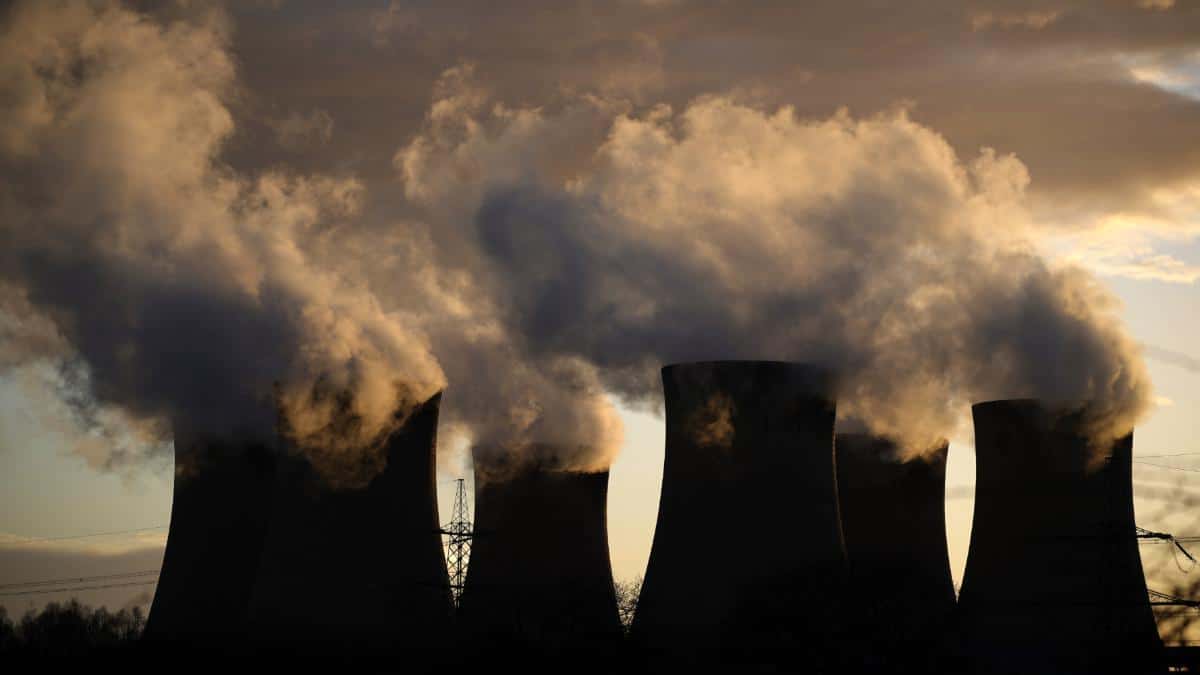

A NASA study proves that fossil fuel emissions are heating the planet. Christopher Furlong / Getty Images
In a first-of-its-kind study, NASA has managed to achieve something that has so far eluded scientists: provide direct, global observations that fossil fuel emissions are heating the planet.
There is already robust evidence that human activity is causing the climate crisis. This conclusion is supported by 97 percent of climate scientists, and has been established through direct observations of skyrocketing carbon dioxide levels and rising temperatures. However, the connection between greenhouse gas emissions and their climate effects remained theoretical, until now. NASA scientists have provided evidence through satellite observations that greenhouse gases are heating the Earth. “It’s direct evidence that human activities are causing changes to Earth’s energy budget,” Ryan Kramer, the study’s first author and a researcher at NASA Goddard Space Flight Center, told CBS News.
The research, published in Geophysical Research Letters on March 25, used satellites to provide evidence of radiative forcing.
Essentially, this is the mechanism behind the greenhouse effect, CBS News explained. When sunlight enters Earth’s atmosphere, some of it is reflected back into space, while some of it is absorbed as heat. In order for global temperatures to remain steady, solar energy coming in needs to equal solar energy going out. Heat can be trapped by greenhouse gases such as carbon dioxide, methane and water vapor. As the concentration of heat-trapping gases increases, the energy balance is thrown off and the Earth becomes warmer. This radiative forcing is the driving mechanism behind climate change.
“While there are well‐established observational records of greenhouse gas concentrations and surface temperatures, there is not yet a global measure of the radiative forcing, in part because current satellite observations of Earth’s radiation only measure the sum total of radiation changes that occur,” the study authors noted.
To get around this, researchers used radiative kernels (a type of methodology) to separate radiative forcing from the totality of energy balance changes observed by satellites between 2003 and 2018. They found that radiative forcing increased, and that these increases were caused primarily by rising greenhouse gases, and secondarily by decreasing aerosol pollution, which has a cooling effect.
In total, radiative forcing increased by 0.5 watts per meter-squared, which is 10 times the energy used by people in a given year, and enough to heat the atmosphere by more than half a degree Fahrenheit in 16 years, CBS News reported.
The study builds on a new but growing body of direct evidence for radiative forcing. A 2015 study made the first observations of carbon dioxide’s ability to absorb heat radiated from Earth’s surface at the surface level. That study focused on two locations in North America during 11 years.
“Numerous studies show rising atmospheric CO2 concentrations, but our study provides the critical link between those concentrations and the addition of energy to the system, or the greenhouse effect,” Daniel Feldman, lead author and a scientist in the U.S. Department of Energy’s Lawrence Berkeley National Laboratory, said in a press release at the time.
However, the NASA study provides the first comprehensive observations of these changes. That said, the observations are just confirming what most scientists already know to be true.
“In reality, the observational results came in just as predicted by the theory,” Brian Soden, study co-author and professor of Atmospheric Sciences at the University of Miami’s Rosenstiel School of Marine and Atmospheric Science, told CBS News. “There is no surprise in the results, but rather it’s really more of ‘dotting the i’s and crossing the t’s’ on anthropogenic [human-caused] climate change. It closes that last link between rising CO2 levels and planetary warming.”

 233k
233k  41k
41k  Subscribe
Subscribe 